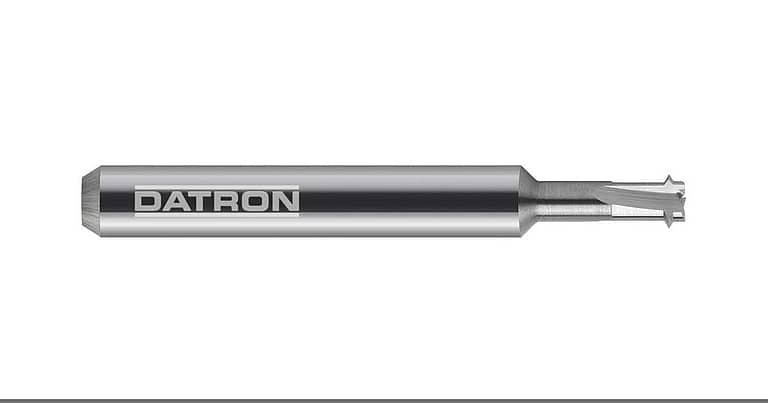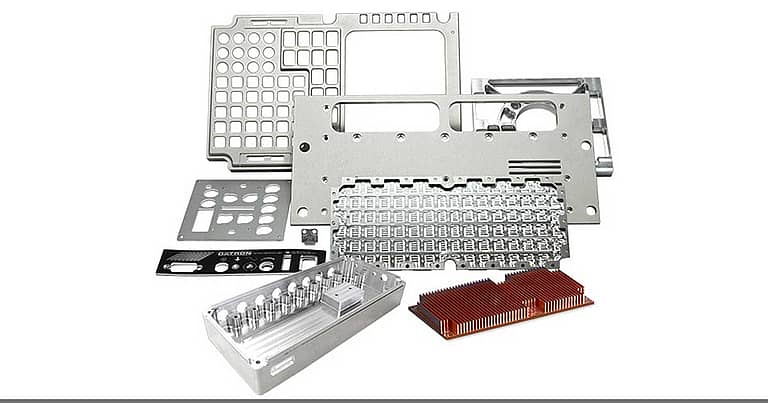It can be fascinating to watch a cutting tool move so easily through material, bringing your vision to life. Have you ever wondered what is behind the science and manufacture of that tool? This article will explain what DATRON end mills are made of, how carbide end mills are made, and the entire workflow required to produce a quality cutting tool.
What are DATRON End Mills Made Of?
You may have wondered what carbide end mills are and why they are used in cutting tools. Carbide is typically a compound of carbon and
tungsten, bonded together under high pressure and fused by heat. This creates a material that is extremely hard, with excellent wear properties and good resistance to high temperatures, making it an excellent choice for making an end mill for machining.
There are many types of carbide, which means a wide range of prices for the material and therefore the product. Typically, industry uses micro-grains, which are micron-sized particles of carbon. This grade offers the best cutting results and longevity but is typically more expensive.
Micro-grain carbide blanks come in the form of small cylindrical bars and are the basis for each milling tool, representing the final tool shank diameter and length. The blank comes with a pre-ground chamfer on one end to help guide the back of the tool into the spindle collet. When setting up a grinder, the operator will typically grind a series of tools with this shank diameter and run numerous production jobs with different cutting diameters and lengths.
For example, they may use (300) 6mm diameter carbide blanks and grind (100) 3mm cutting diameters, then (100) 2mm cutting diameters, then (100) 1mm cutting diameters in a single set-up. The setup can be time consuming to dial in the tolerances, so the more tools you can grind within that shank diameter of tools, the more time you save with better quality control.
How are Carbide End Mills Made?
Before a carbide blank goes to the grinder, its part identity number is laser marked. This helps the customer to identify the tool. The next step is what experts call pre-grinding. They use a grinder with a rotating diamond wheel in conjunction with the rotating carbide blank and grind the tool down to the correct cutting diameter and length.
At this point there are no cutting flutes or edges yet. When grinding is complete, a robotic arm places the finished blank on a pallet and picks up the next carbide blank. Typically, no operator intervention is required during this production run.
The next step is to grind the actual cutting flute. Using another machine with two rotating diamond wheels. One wheel is used to rough grind the cutting geometry, while the second one is used to finish or polish the flute. This helps to ensure a more consistent tolerance over the production run because you are only grinding a minimal amount with the second wheel, so the wear on the diamond wheel is minimal and does not affect tolerances as quickly.
In addition, more force is absorbed by the first wheel, which has a rougher surface. During the grinding process, the tool is held stationary while the diamond wheels rotate around the carbide stock. A high-pressure, temperature-controlled oil-based coolant is used to lubricate the process, which also helps to maintain tolerances and grind quality.
Once the tool is finished, it is checked with a laser measurement system with pre-programmed measurement routines for each type of tool. If

the devices detect a problem, they can stop the run and make corrections. The tool quality is also checked with an optical comparator under extreme magnification.
DATRON also marks a production run identification number. So, if you have a problem with a cutting tool, they can ask you for the identification number. This number is laser engraved at the same time as the part number and is linked to the production run information. This number tells you which operator produced the tool, on which machine and with which batch of material. This helps the German specialists from DATRON to maintain good quality control and, if there are any issues, to understand how to prevent them in the future.
Why You Should Choose DATRON
DATRON AG, a machine builder and milling machine specialists located near Frankfurt has been developing and marketing their own tool range since 1990. For almost three decades a selection of prominent tool grinding companies nearby the DATRON worldwide headquarters in Muehltal, Germany, used to grind DATRON cutting tools according to precise technical specifications of the DATRON tool construction team.
In 2018, DATRON bundled its technical tool competencies in one place, partnering with a major tool expert, a grinding company leveraging half a century of experience like DATRON does. Great care is taken in the production of DATRON high-quality cutting tools, from the choice of materials to the type of equipment used in the grinding process, to the inspection and quality control procedures, all contribute to the worldwide renowned product.
“We produce our tools inhouse to provide the customer with a complete service,” says Marius Matuschkiewitz, head of the DATRON Tool branch at the company’s headquarters in Germany. He further explains, “All we want is make the customer happy with the whole milling process. If you look at it, you will see that the cutting tool is one of the most important things used. To run a high-quality machine properly, you need to use high quality tools”.









